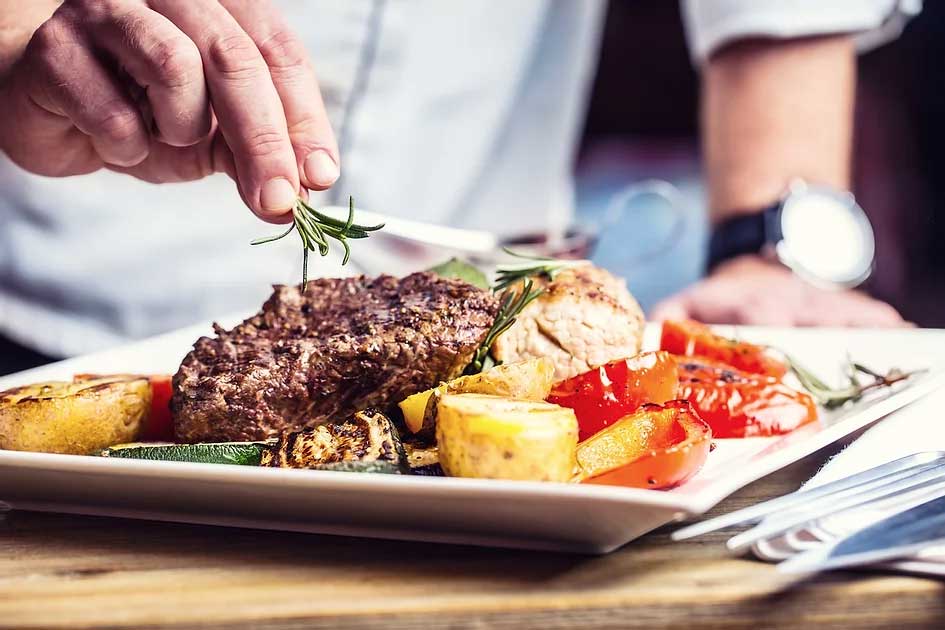
Opening a restaurant is a dream come true. You have the unique opportunity to share your passion for food with your community.
Whether it’s recipes passed down from generation to generation or utilizing your skills from cooking school, restaurant ownership is a fun and lucrative profession.
But, there is the business side of things too.
Although your restaurant can be busy every night, it’s possible to be in the red if your business is not properly managed. Controlling food costs and waste is one way to make sure you’re still in business tomorrow.
So, how do you control food costs? What action steps can you begin taking now to increase profits and substantially grow your restaurant business?
Here are five smart ways to start:
Inventory
First In, First Out (FIFO)
Tracking your inventory is one of the best ways to cut your food waste. Start by making sure your staff is aware of how your FIFO works. As a result, you’ll reduce the number of expired items in your inventory.
This can be as easy as educating your staff to put the items with the earliest expiration date in the front of the shelf.
Organization
We can agree that the restaurant industry is fast-paced. So, keeping the restaurant organized on a regular basis may feel overwhelming.
However, it can play a big role in reducing your food spoilage because important things are less likely to fall through the cracks.
Therefore, take some time to create an organized system for your inventory. When items are easier to find, it will take the stress out of the lunch rush and save you money.
Things won’t get lost or overlooked nearly as much if the workspace is clean and organized.
Inventory Checks
Do inventory checks on a regular basis. This can be weekly, monthly, or daily; whatever works best for your restaurant.
The last thing you want is to run out of a critical item or find hidden, spoiled food.
Meal Costs
Each meal should have a cost calculation attached to it. As simple as it sounds, this is more than just the total cost of its ingredients.
You also want to consider all the diners you serve during a given period. Then, calculate delivery costs, spoilage, theft, and when a meal is sent back. This will give you a solid idea of what each meal really costs!
You can evaluate your real profits and discover where you can cut costs.
Meal Planning
Another way to control your food cost is through meal planning. To meal plan effectively, you must have a good feel for your target market. If your average customer only wants to spend $10 on lunch, your menu should only have those options.
Also, look at your total cost per customer opposed to the total cost of each dish. If a dish is more expensive than people will pay, take it off the menu. Knowing this about your guests will reduce your expenses in the long-term.
However, there are ‘loss leaders’ on everyone’s menu. These items are priced lower than they cost. You make up for the loss with appetizers along with one of the biggest money makers – drinks!
Reducing Waste
There are many ways food waste can occur and you want to tackle them as they come.
Food prepared incorrectly – If the customer sends back food because it was not made to their liking, this food is wasted. Provide your wait staff with the necessary resources to get all the information from customers regarding their meal to ensure it’s correct the first time.
This is also important when it comes to food allergies.
Over or undercooked food – Make sure your ovens and stoves are calibrated on a regular basis. Doing so ensures your staff can replicate each dish efficiently without worrying whether or not it’s under or overcooked.
Spilled food – This will happen occasionally. However, if it’s occurring frequently, take a look at your kitchen to pinpoint the issue. Are slip mats missing for staff to walk on? Are people running into each other during the lunch rush? Is there a better way to organize a good flow of traffic for the wait staff and cooks?
Portion Control
Big portions may seem like a selling point, but only if they’re not costing you money.
You see, if you have several plates coming back to the kitchen with food still on them, then you need to re-evaluate your portions. In fact, cutting back on the portions without changing the cost of the meal can save you a bundle.
It also doesn’t affect the customer’s perception of your restaurant.
Controlling food costs and waste helps keep your dream of owning a restaurant a reality. As you implement these steps, you’ll find that eliminating certain practices that causes food waste will save you money and increase profits. It’s simply one of the best ways you can keep your restaurant in the black and be in business for years to come!
At GWT2Energy, we offer another way for you to drive profits: through energy conservation. By consulting with one of our experts, we’ll show you how to reduce your energy bill, helping to save your business thousands on a yearly basis.
Contact us for a free consultation to learn more!



